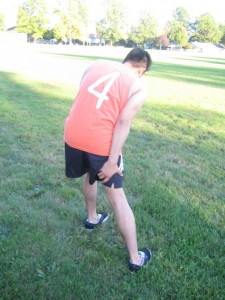Bedbugs are small-sized, oval-shaped, flat insects with brown color that typically hide in the crevices and cracks of beds, headboards, box springs and bed frames. These insects bite an individual while he/she sleeps and can trigger skin irritation that can cause discomfort.
Bedbugs are quite common in dormitories, apartment complexes, homeless shelters, hotels and areas with high occupancy. The indications of bedbug bites are usually treated with the application of topical creams or antihistamines that are taken orally. If bedbugs are suspected, professional extermination services might be required to completely eliminate the bedbugs. The individual should recognize and manage the symptoms of bedbug bites in order to prevent further complications from developing.
Redness

Always remember that bedbug bites produce a distinctive rash that differentiates it from bites of other insects. The bedbug bites are red in color but have a darker red spot in the center. The redness develops due to the damage to the skin instigated by the insect bedbug bite. Additionally, the immune system generates chemical signals that can increase the redness in the area of the bites.
An individual who sustained bedbug bites will notice red spots on the face, arms, neck and hands. The individual should take note of the locations of these red spots to ensure that new ones are not manifesting every morning.
Itchiness
Aside from the redness, bedbug bites can become itchy since the immune system generates chemical signals as a response to the bedbug bites. Individuals who sustained bites must avoid scratching in order to prevent the development of open sores where bacteria can enter.
Hydrocortisone cream or an diphenhydramine taken orally can be given to manage this symptom. The individual should seek medical care if the red spots become sore or continue to enlarge. By enrolling in a class on first aid, you will learn how to handle this symptom as well as prevent it from worsening.
Blisters
In severe cases of bedbug bites, it can trigger an allergic response involving itchiness, severe blistering and hives. Take note that these signs and symptoms are indications of a serious case that entails immediate medical care.
It is important to call for emergency assistance if the individual experiences wheezing, difficulty breathing, swelling on the mouth or face, shortness of breath, difficulty swallowing as well as tightness of the throat or starts to turn bluish in color. Additionally, those who bring along an emergency epinephrine should administer a shot. Once an epinephrine shot is given, you still have to bring the individual to the emergency department for further assessment and treatment.
If the infestation of bed bugs is severe, it would require professional extermination services to completely eliminate them. This will ensure that all the bedbugs are eliminated, thus preventing them from biting that can trigger an allergic response in some individuals.
